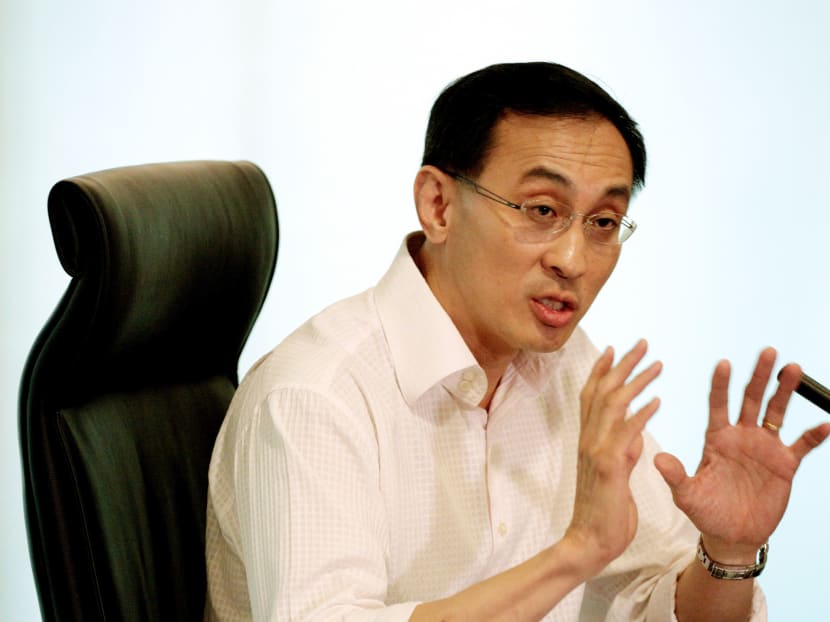Sticking to current model could have led to financial woes for SMRT: CEO
SINGAPORE — Trotting out figures in recent years and projections ahead, SMRT painted a picture on Friday (July 15) of its possible financial woes should it continue operating under the current rail operations framework.
SINGAPORE — Trotting out figures in recent years and projections ahead, SMRT painted a picture on Friday (July 15) of its possible financial woes should it continue operating under the current rail operations framework.
Due to the expected continued rise in rail-related capital expenditure to counter the ageing network and higher costs from the raised regulatory standards — which has not been matched by revenue from fare adjustments — the rail operator’s head honcho Desmond Kuek said the declining trend in profitability would have hampered the company’s ability to perform its core role of delivering quality service to commuters.
“A declining trend can be observed in SMRT’s rail-related opportunities since FY2012. Despite the steady increase in non-fare earnings, this trend is expected to persist under the current financing framework, as the additional capital expenditure and increased depreciation would exert additional pressure on the future cashflow and profits of the SMRT Trains entity,” he added.
Shifting away from the current asset-heavy business model, therefore, is not just the sustainable option for SMRT, but also beneficial for commuters since it would be freed up to focus on providing reliable and well-maintained rail services, Mr Kuek told a media briefing.
He spoke a few hours after the Land Transport Authority (LTA) announced the New Rail Financing Framework. Mr Kuek said SMRT currently faces three challenges under the existing financing framework.
The first is heavy capital expenditure due to an ageing rail network, with costs expected to increase over the next five years. The company’s total spending to upkeep its current rail network is expected to reach around S$2.8 billion. Fare increments have also not kept pace with the fare adjustment formula, said Mr Kuek.
The shortfall from rail fare and the commuter concessions, absorbed by SMRT since Financial Year (FY) 2001, totalled S$1.2 billion and S$700 million, respectively.
Lastly, SMRT is also faced with increased maintenance and operational costs, reaching S$693 million in FY16 — an increase from S$662 million in the previous financial year. This year’s maintenance-related expenses accounted for 45 per cent of rail fare revenue.
Under the new financing framework, which will affect its North-South, East-West lines, Circle Line and the Bukit Panjang LRT Line, the LTA will take over ownership of SMRT’s rail operating assets.
SMRT will be granted a licence to run the rail lines for 15 years, starting from Oct 1 this year, with a possible extension of another five years.
The trains run by SMRT are also expected to comply with stricter Maintenance Performance Standards, such as the mean kilometres between failures, set by the LTA.
The operator will also pay a licence charge to the LTA, which will go into the Railway Sinking Fund for the maintaining of rail assets. The licence charge will be structured to allow SMRT to achieve an earnings before interest and tax (EBIT) margin of about 5 per cent a year.
When asked by TODAY about how much SMRT is expected to pay for its licence charge, Mr Kuek declined to give an estimate, adding that the charge would “fluctuate from year to year”. Meanwhile, the operator is expected to announce a date for its Extraordinary General Meeting (EGM) by August, with the EGM to be held by September.
The transfer to the new financing framework starts on Oct 1.
Mr Kuek also noted that the company does not intend to use proceeds from the sale of its assets — totalling S$1.06 billion — to pay any special dividend to its shareholders. Instead, it plans to use the proceeds to pay off part of a projected debt of S$762 million, which was partially incurred while funding rail operating asset investments. The other portions of the sale will go towards paying taxes, and investment in developing and strengthening rail engineering competencies.
Responding to TODAY’s question about why negotiations for the transition to the new financing framework were only concluded now since they began in 2011, Mr Kuek said the transition was an “intricate and complex process”.
“We own a significant amount of operating assets, (and there is) a lot to be discussed about how these assets have to be handed over.”
He said there were at least 60,000 line items to be accounted for, which will take time to properly account for and hand over.
Moving forward, Mr Kuek said the rail operator will be committed to meet the higher maintenance requirements set out by the new framework.
As such, the company will beef up hiring for its maintenance workforce, adding about 20 per cent, or at least 700, more employees.










